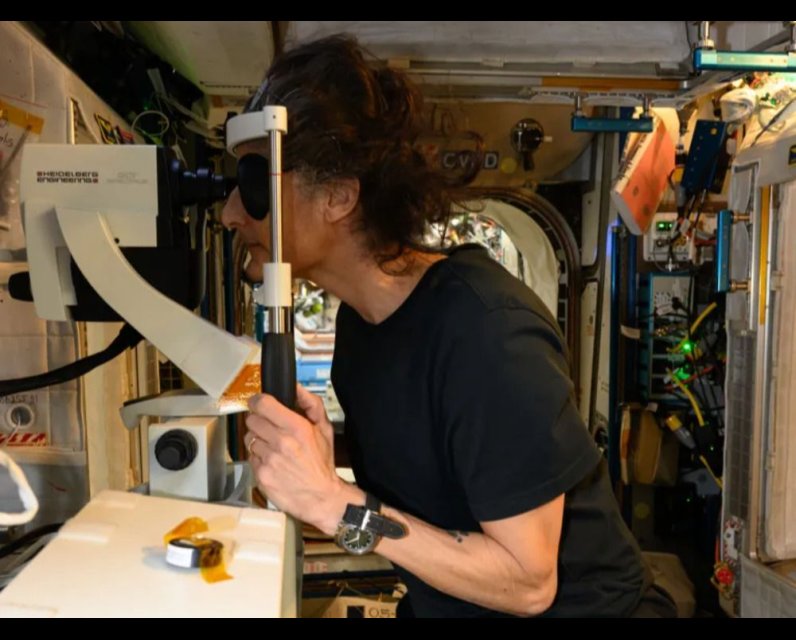There is a serious side effect to going to space, NASA says

A new study from NASA , conducted over several years of long-duration spaceflights on the International Space Station, has found that more than half of U.S. astronauts started noticing changes in their vision after more than six months aboard the ISS. Here’s what to know.
What does the study say?“Many found that, as their mission progressed, they needed stronger reading glasses,” the study says. “Researchers studying this phenomenon identified swelling in the optic disc, which is where the optic nerve enters the retina, and flattening of the eye shape.”
Does the condition have a name?The acronym-loving space agency calls the condition SANS, short for Space-Associated Neuro-ocular Syndrome.
What is causing it?“Microgravity causes a person’s blood and cerebrospinal fluid to shift toward the head, and studies have suggested that these fluid shifts may be an underlying cause of SANS,” researchers at NASA found.
A Canadian-led study with an even longer acronym — Space Flight-Associated Neuro-ocular Syndrome Ocular Rigidity Investigation, or SANSORI — was carried out to determine whether stiffness of the eye, called ocular rigidity, contributes to development of SANS.
It studied 26 eyes (or 13 crew members) that spent between 157 and 186 days on the ISS, and revealed a drop in ocular rigidity (33 per cent), intraocular pressure (11 per cent) and ocular pulse amplitude (25 per cent) following the missions. “These findings reveal previously unknown effects of microgravity on the eye’s mechanical properties, contributing to a deeper understanding of … SANS,” researchers wrote. “Long-term space missions significantly alter ocular biomechanics and have the potential to become biomarkers of disease progression.”
What kinds of treatment have been tried?NASA has a study taking place now on the space station with a device called the Thigh Cuff . The ongoing investigation has 10 astronauts using tight leg cuffs to change the way fluid moves around inside the body, especially around the eyes and in the heart and blood vessels.
That study is expected to wrap up next year but, if successful, the team behind the device says, “the cuffs could serve as a countermeasure against the problems associated with fluid shifts, including SANS.”
He smashed the world record by spending 878 days in space. His body is likely not the sameThey add: “A simple and easy-to-use tool to counter the headward shift of body fluids could help protect astronauts on future missions to the Moon and Mars. The cuffs also could treat conditions on Earth that cause fluid to build up in the head or upper body, such as long-term bed rest and certain diseases.”
Other possible treatments have been considered. Last year, a paper was published about an unnamed female astronaut with a particularly severe case of SANS. Her condition improved after she started taking a prescribed B-vitamin supplement that was flown to her on the station; however, there was coincidentally a reduction in cabin carbon dioxide at the same time, so researchers weren’t certain if that may have also helped.
Are there long-term effects?The good new is that SANS does not seem to be a lifelong condition. In an interview , Dr. Andrew G. Lee, a Houston ophthalmologist and one of the authors of the above study, was refreshingly blunt about the longterm consequences.
“Astronaut vision is super important, not only for their safety but for mission quality,” he said. “It’s really important not to have blind people going to Mars.”
He added: “But so far so good. We have not seen any permanent vision loss from any SANS case, and the treatment seems to be come home. So once you get back to the gravitational field of the planet it seems to just go away after a while.”
Our website is the place for the latest breaking news, exclusive scoops, longreads and provocative commentary. Please bookmark nationalpost.com and sign up for our newsletters here.

Comments
Be the first to comment